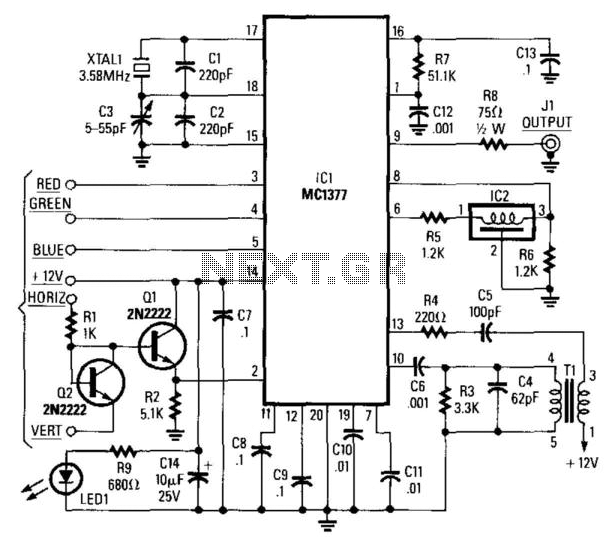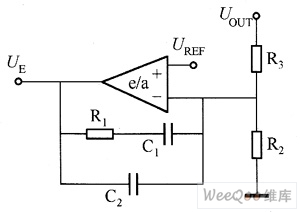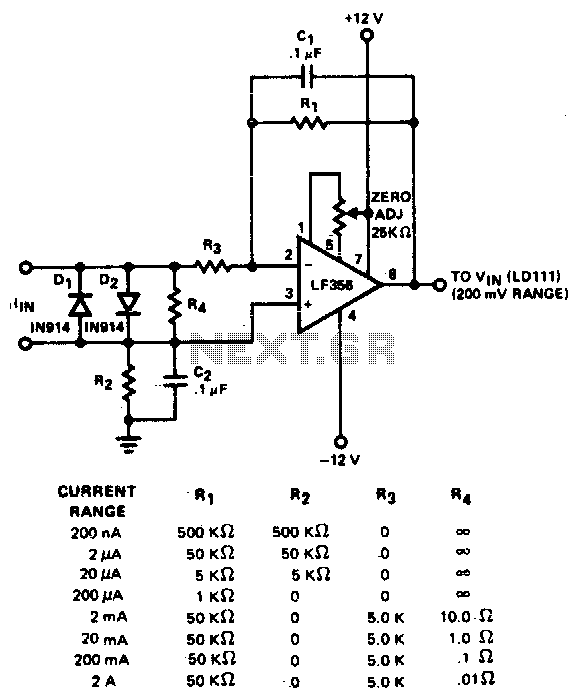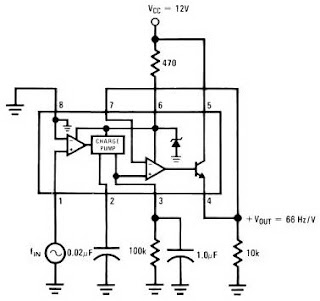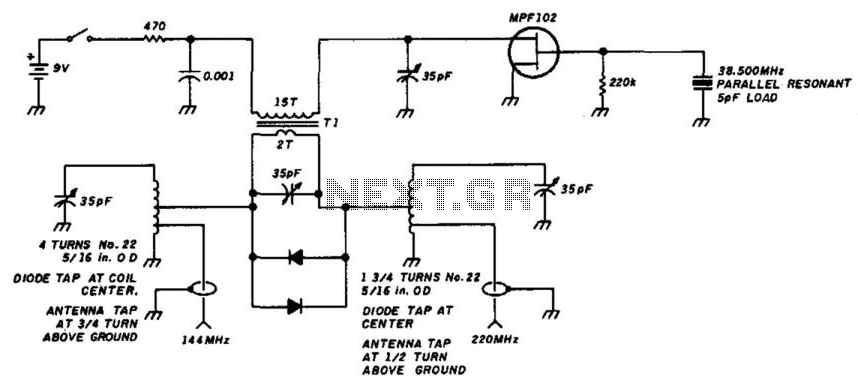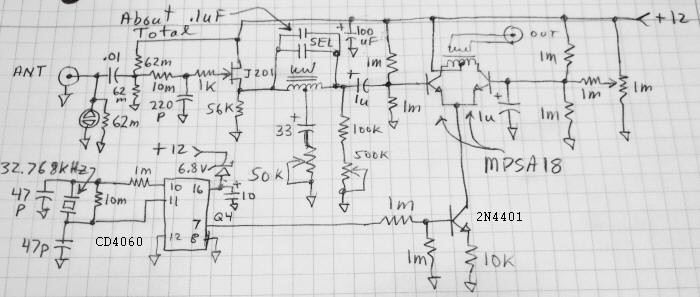
28V DC To 5V DC Switch-Mode Converter (Regulator)
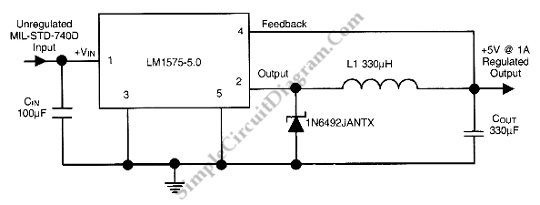
This is a 28VDC to 5VDC switching converter circuit. As a switch-mode voltage regulator, this circuit provides higher efficiency than linear regulator types.
The 28VDC to 5VDC switching converter circuit operates by converting a higher voltage direct current (DC) input into a lower voltage DC output with increased efficiency. The circuit typically employs a power switch, usually a transistor, which rapidly turns on and off to control the energy transfer from the input to the output. This switching action allows the circuit to maintain a stable output voltage while minimizing energy loss, a significant advantage over linear regulators which dissipate excess voltage as heat.
Key components of the circuit include an inductor, a diode, and capacitors. The inductor stores energy when the switch is closed and releases it to the output when the switch is open. The diode prevents backflow of current and ensures that the energy flows in the correct direction. Input and output capacitors are used to smooth out voltage fluctuations, providing a stable output voltage.
The efficiency of this switching converter can be further enhanced by employing techniques such as pulse-width modulation (PWM) to control the duty cycle of the switch, optimizing the energy transfer process. Additionally, feedback mechanisms may be implemented to monitor the output voltage and adjust the switching operation accordingly, ensuring consistent performance under varying load conditions.
Overall, this 28VDC to 5VDC switching converter circuit is an effective solution for applications requiring efficient power conversion, making it suitable for powering low-voltage devices from higher voltage sources.This is a 28VDC to 5VDC switching converter circuit. As a switch-mode voltage regulator, this circuit gives higher efficiency than linear regulator type.. 🔗 External reference
The 28VDC to 5VDC switching converter circuit operates by converting a higher voltage direct current (DC) input into a lower voltage DC output with increased efficiency. The circuit typically employs a power switch, usually a transistor, which rapidly turns on and off to control the energy transfer from the input to the output. This switching action allows the circuit to maintain a stable output voltage while minimizing energy loss, a significant advantage over linear regulators which dissipate excess voltage as heat.
Key components of the circuit include an inductor, a diode, and capacitors. The inductor stores energy when the switch is closed and releases it to the output when the switch is open. The diode prevents backflow of current and ensures that the energy flows in the correct direction. Input and output capacitors are used to smooth out voltage fluctuations, providing a stable output voltage.
The efficiency of this switching converter can be further enhanced by employing techniques such as pulse-width modulation (PWM) to control the duty cycle of the switch, optimizing the energy transfer process. Additionally, feedback mechanisms may be implemented to monitor the output voltage and adjust the switching operation accordingly, ensuring consistent performance under varying load conditions.
Overall, this 28VDC to 5VDC switching converter circuit is an effective solution for applications requiring efficient power conversion, making it suitable for powering low-voltage devices from higher voltage sources.This is a 28VDC to 5VDC switching converter circuit. As a switch-mode voltage regulator, this circuit gives higher efficiency than linear regulator type.. 🔗 External reference
